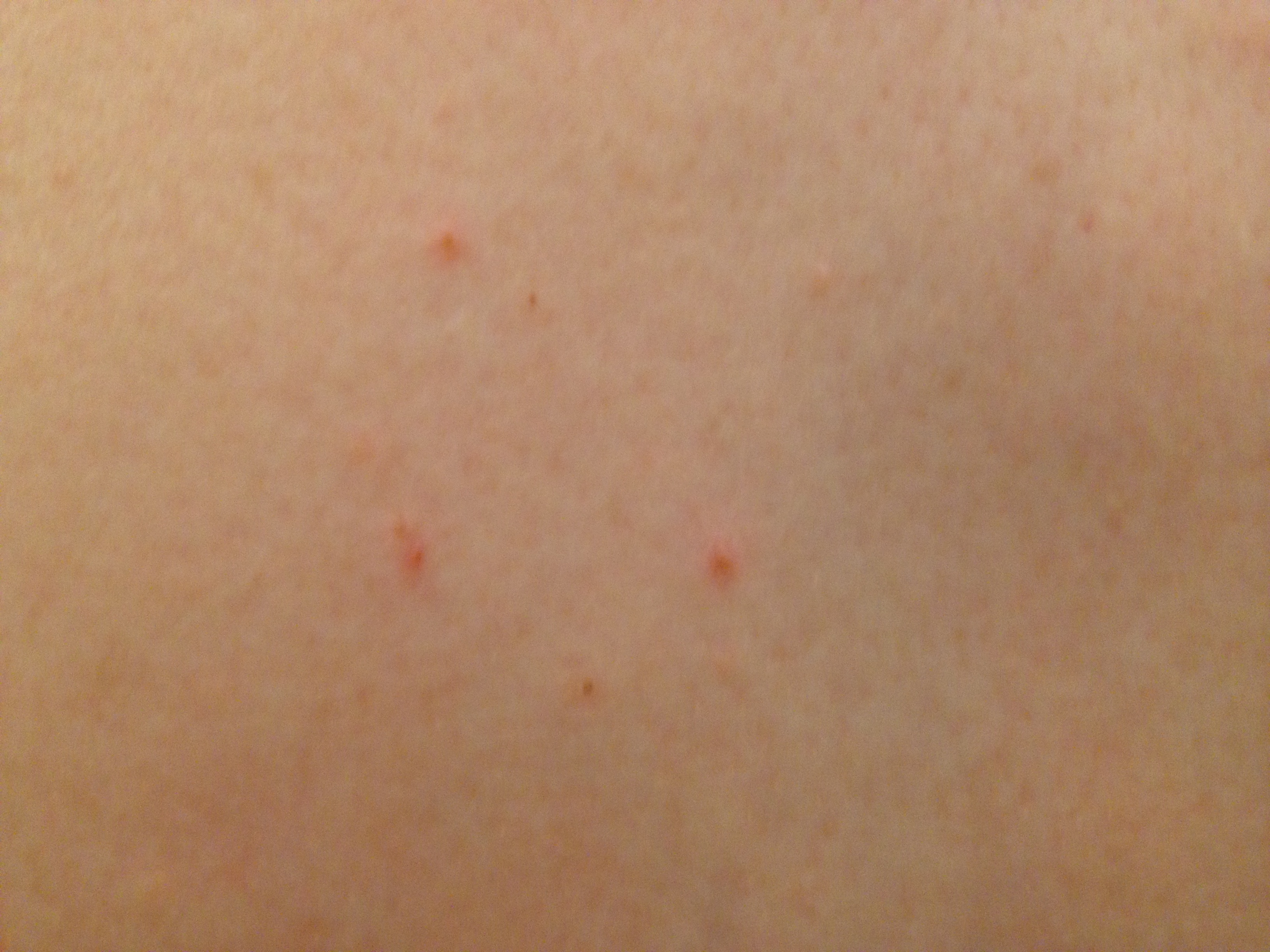Have you ever noticed red small bumps on your skin and wondered what they might be? These pesky spots can appear anywhere on your body, causing discomfort and concern. While they might seem harmless at first glance, red small bumps can indicate a range of underlying conditions, from mild irritations to more serious dermatological issues. Understanding their causes and treatments is essential for maintaining healthy skin and overall well-being.
Red small bumps are not always a cause for alarm, but they shouldn't be ignored either. They can be triggered by factors such as allergies, infections, or environmental irritants. Whether you're dealing with a sudden breakout or chronic bumps, it's important to recognize the signs and symptoms early on. This article dives deep into the causes, treatments, and prevention strategies for red small bumps, equipping you with the knowledge to tackle this common skin concern effectively.
From lifestyle changes to medical interventions, there are numerous ways to address red small bumps. By exploring the latest insights and expert advice, we aim to provide a comprehensive guide that empowers you to take control of your skin health. Whether you're seeking answers for yourself or a loved one, this article will serve as a valuable resource for navigating the complexities of red small bumps.
Read also:Kotaro Lives Alone Season 2 Everything You Need To Know About The Upcoming Anime
Table of Contents
- What Are Red Small Bumps?
- What Are the Common Causes of Red Small Bumps?
- How to Identify Symptoms of Red Small Bumps?
- What Are the Best Treatment Options for Red Small Bumps?
- Prevention Tips for Red Small Bumps
- When Should You See a Doctor for Red Small Bumps?
- How Can Lifestyle Changes Help Manage Red Small Bumps?
- Frequently Asked Questions About Red Small Bumps
What Are Red Small Bumps?
Red small bumps are a common dermatological condition that manifests as tiny, raised areas on the skin. These bumps can vary in size, shape, and texture, often appearing red or pink due to inflammation or irritation. They can occur on any part of the body, including the face, arms, legs, and torso. While some red small bumps are harmless and resolve on their own, others may indicate an underlying issue that requires medical attention.
There are several types of red small bumps, each with distinct characteristics. For instance, acne-related bumps are often accompanied by whiteheads or blackheads, while eczema-related bumps may appear dry and scaly. Insect bites, such as those from mosquitoes or bedbugs, can also cause red small bumps, often accompanied by itching or swelling. Understanding the type of bump you're dealing with is the first step toward effective treatment.
Red small bumps can be triggered by a variety of factors, including allergies, infections, and environmental irritants. Some people are more prone to developing these bumps due to genetic predispositions or skin sensitivities. By identifying the root cause, you can tailor your approach to managing and preventing red small bumps effectively.
What Are the Common Causes of Red Small Bumps?
Understanding the causes of red small bumps is crucial for effective management. One of the most common culprits is allergic reactions. When your skin comes into contact with an allergen, such as certain fabrics, soaps, or foods, it may react by forming red small bumps. These reactions can range from mild to severe, depending on the individual's sensitivity.
Environmental Factors That Trigger Red Small Bumps
Environmental factors play a significant role in the development of red small bumps. Exposure to extreme temperatures, humidity, or pollution can irritate the skin and lead to breakouts. For example, cold weather can cause dryness and cracking, which may result in red small bumps. Similarly, excessive sun exposure can trigger inflammation and redness.
How Do Infections Cause Red Small Bumps?
Infections, both bacterial and viral, are another leading cause of red small bumps. Conditions like folliculitis, caused by bacteria infecting hair follicles, can lead to painful, red bumps. Viral infections, such as chickenpox or shingles, often present with red small bumps that may blister or crust over. Recognizing the signs of an infection is essential for seeking timely treatment.
Read also:How To Securely Connect Remoteiot Vpc Raspberry Pi Free Download For Windows
- Allergic reactions to skincare products or environmental allergens
- Friction or irritation from tight clothing or accessories
- Heat rash caused by blocked sweat glands
- Stress-related skin conditions like hives
How to Identify Symptoms of Red Small Bumps?
Identifying the symptoms of red small bumps is key to determining their cause and severity. The most obvious sign is the appearance of raised, red areas on the skin. These bumps may be smooth, rough, or filled with fluid, depending on their underlying cause. Other symptoms often accompany red small bumps, providing additional clues about their origin.
Common Symptoms Associated with Red Small Bumps
Itching is one of the most common symptoms associated with red small bumps. This sensation can range from mild to intense, depending on the cause. In some cases, the bumps may also feel tender or painful to the touch. Swelling and warmth around the affected area are additional indicators of inflammation or infection.
Are There Any Warning Signs to Watch Out For?
While most red small bumps are harmless, certain warning signs should not be ignored. If the bumps spread rapidly, become increasingly painful, or are accompanied by fever, it could indicate a more serious condition. Similarly, if the bumps persist for an extended period or fail to respond to over-the-counter treatments, it's important to consult a healthcare professional.
What Are the Best Treatment Options for Red Small Bumps?
Treating red small bumps depends on their underlying cause. For mild cases, over-the-counter remedies like hydrocortisone cream or antihistamines can provide relief. These treatments help reduce inflammation, itching, and redness, allowing the skin to heal naturally. However, more severe cases may require prescription medications or professional interventions.
Medical Treatments for Persistent Red Small Bumps
If red small bumps persist despite home remedies, it may be necessary to seek medical treatment. A dermatologist can prescribe stronger topical or oral medications, such as antibiotics or corticosteroids, to address infections or chronic conditions. In some cases, procedures like laser therapy or cryotherapy may be recommended to target stubborn bumps.
Can Natural Remedies Help with Red Small Bumps?
Many people turn to natural remedies to soothe red small bumps. Aloe vera, oatmeal baths, and chamomile are popular choices for reducing inflammation and irritation. While these remedies can be effective for mild cases, they should not replace professional treatment for more serious conditions. Always consult a healthcare provider before trying new treatments.
Prevention Tips for Red Small Bumps
Preventing red small bumps starts with understanding your skin's unique needs. Maintaining a consistent skincare routine is essential for keeping your skin healthy and free of irritation. This includes using gentle, fragrance-free products and avoiding harsh chemicals that can trigger breakouts.
Protecting your skin from environmental factors is another key prevention strategy. Wearing sunscreen, staying hydrated, and avoiding excessive heat or cold can help minimize the risk of developing red small bumps. Additionally, wearing loose, breathable clothing can reduce friction and irritation.
When Should You See a Doctor for Red Small Bumps?
Knowing when to seek medical advice is crucial for managing red small bumps effectively. If the bumps are accompanied by severe symptoms like fever, spreading redness, or pus, it's important to consult a healthcare professional immediately. These signs could indicate an infection or other serious condition that requires prompt treatment.
Signs You Need Medical Attention for Red Small Bumps
Other red flags include bumps that don't improve with over-the-counter treatments or those that recur frequently. A dermatologist can perform tests to determine the underlying cause and recommend appropriate treatment options. Early intervention can prevent complications and promote faster healing.
How Can Lifestyle Changes Help Manage Red Small Bumps?
Making lifestyle changes can significantly reduce the frequency and severity of red small bumps. Stress management techniques, such as meditation or yoga, can help regulate hormones that contribute to skin issues. A balanced diet rich in vitamins and antioxidants also supports skin health and boosts the immune system.
The Role of Diet and Skincare in Managing Red Small Bumps
Incorporating skin-friendly foods like fruits, vegetables, and omega-3 fatty acids into your diet can improve skin texture and reduce inflammation. Avoiding triggers like processed foods, alcohol, and caffeine may also help prevent breakouts. Pairing a healthy diet with a consistent skincare routine can yield long-term benefits for your skin.
Frequently Asked Questions About Red Small Bumps
What Causes Red Small Bumps on the Face?
Red small bumps on the face are often caused by acne, rosacea, or allergic reactions. Identifying the specific trigger can help you choose the right treatment.
Can Red Small Bumps Be a Sign of an Allergic Reaction?
Yes, red small bumps can indicate an allergic reaction to skincare products, foods, or environmental factors. Avoiding the allergen is key to preventing future breakouts.
How Long Do Red Small Bumps Last?
The duration of red small bumps varies depending on their cause. Mild cases may resolve within a few days, while chronic conditions may require ongoing treatment.
In conclusion, red small bumps are a common yet manageable skin concern. By understanding their causes, symptoms, and treatments, you can take proactive steps to maintain healthy skin. Whether through lifestyle changes, medical interventions, or natural remedies, there are numerous ways to address this issue effectively. Remember to consult a healthcare professional if you have persistent or severe symptoms, and prioritize prevention to keep your skin in optimal condition.
Learn more about skin conditions and treatments from the American Academy of Dermatology.

